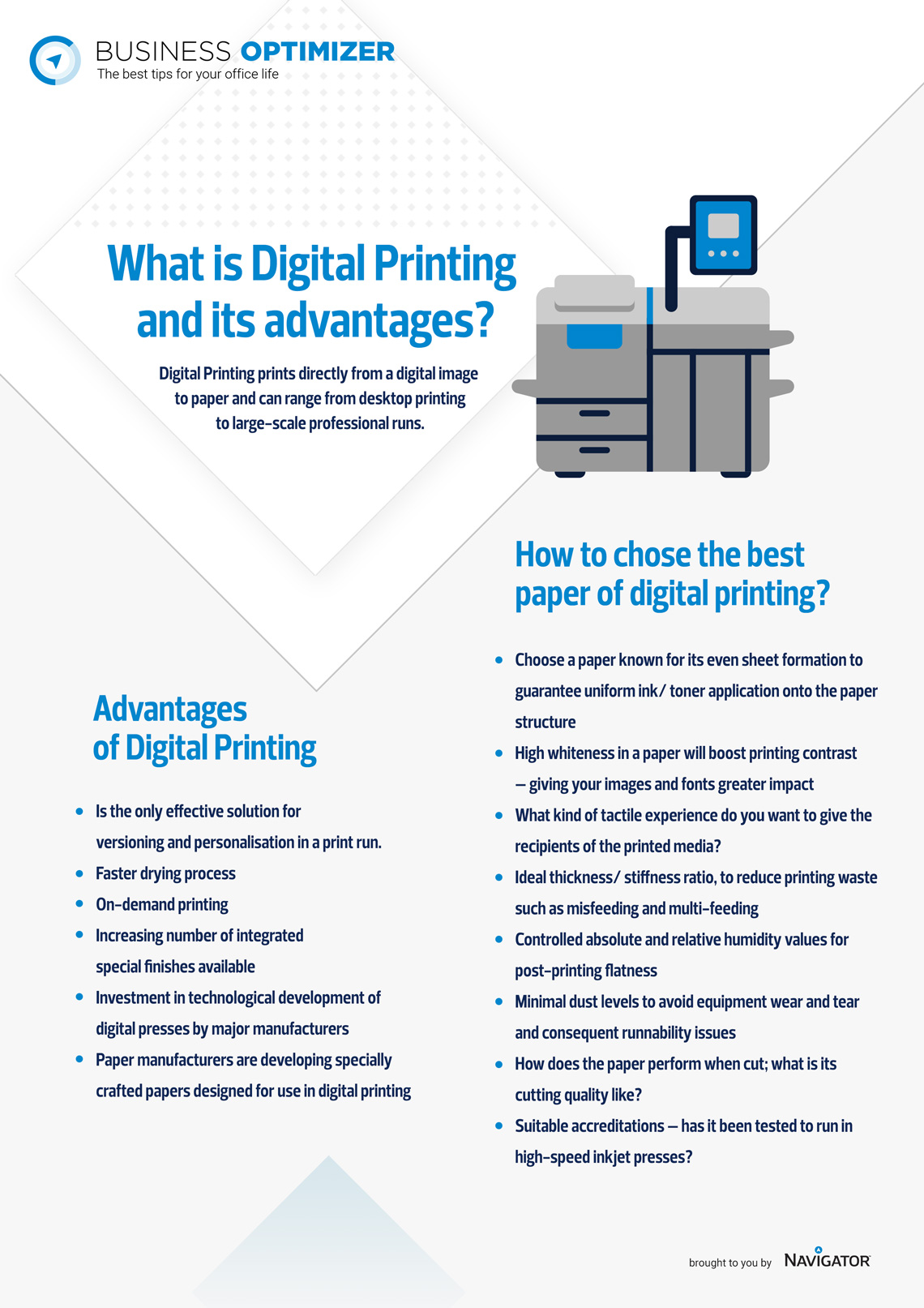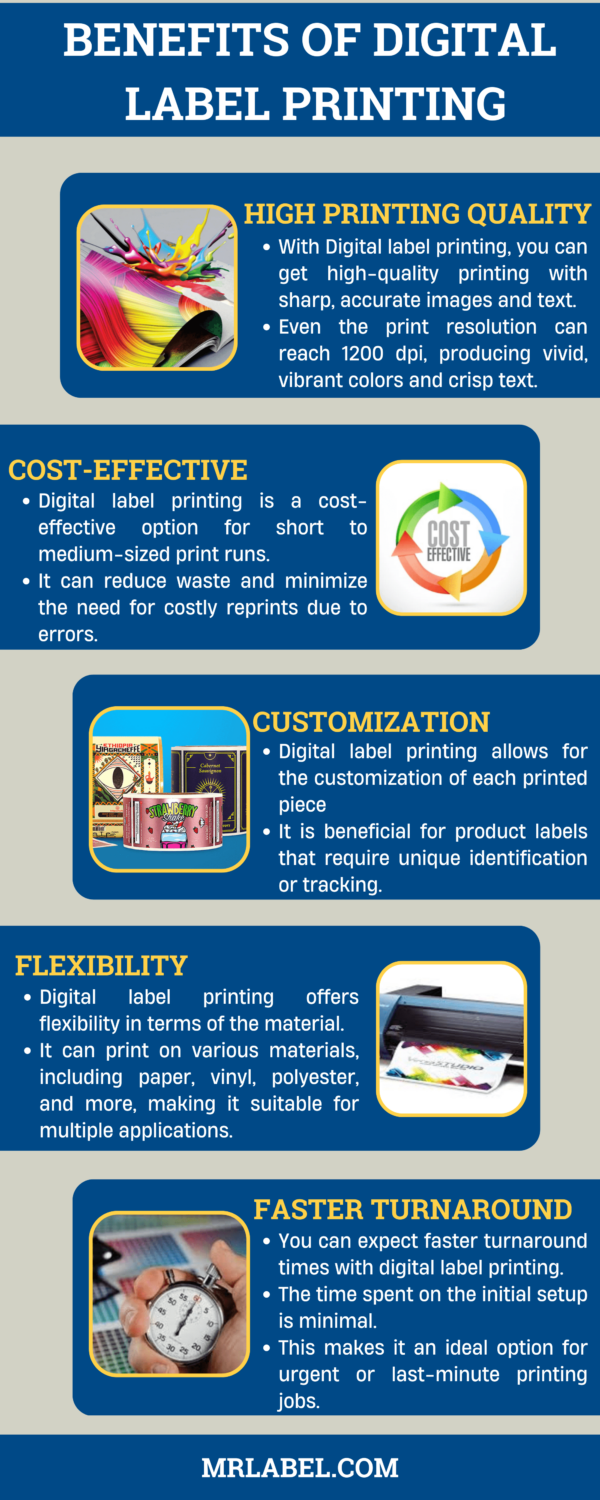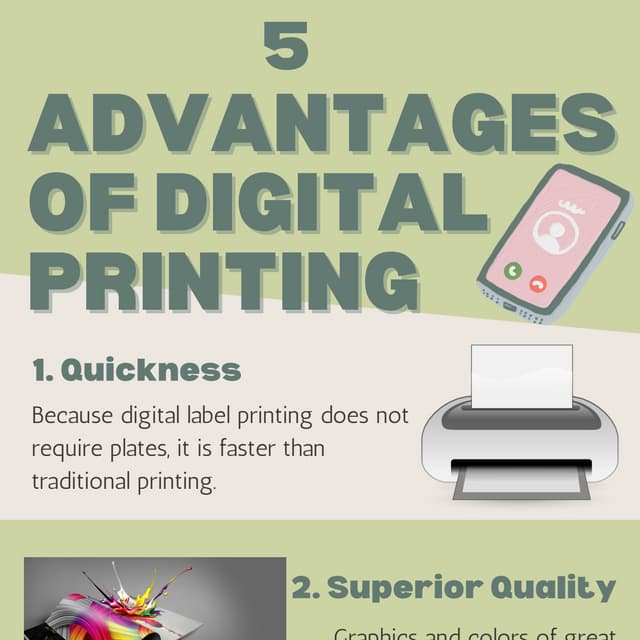Digital Printing Things To Know Before You Buy
Table of ContentsThe Buzz on Digital PrintingThe Ultimate Guide To Digital PrintingThe 20-Second Trick For Digital PrintingNot known Details About Digital Printing The Ultimate Guide To Digital PrintingDigital Printing - The Facts
Variable information printing, such as straight mail with personalized codes and addresses, is preferably matched for digital printing. Digital quick printing only requires 4 actions of style, testimonial, printing and binding to get everything done. Digital fast printing has an exceptional advantage: print on demand.According to PMMI, electronic printing permits brands and producers to respond rapidly to client needs while boosting the supply chain, decreasing warehousing expense and waste, and delighting in faster time to market. That all sounds wonderful, but just how does this technology do all that? The major differentiator of these innovations is that there are no set up fees and no plates with digital printing.
How Digital Printing can Save You Time, Stress, and Money.
According to Wikipedia, the best distinction between digital printing and typical methods such as lithography, flexography, gravure, or letterpress - Digital Printing is that there is no need to change printing plates in electronic printing, whereas in these analog printing techniques home plates are repeatedly replaced. This results in quicker turn-around time and reduces cost when utilizing digital printing.
Quick manufacturing means obtaining your item to market quicker. It additionally means it's much easier and faster to make adjustments in the future, when you change a recipe, add a SKU, or develop seasonal product packaging. Digital printing is highly flexible, so it's easy to make adjustments to the bundle design swiftly. All of it returns to home plates.
Much more inventory can suggest even more waste in the future. With traditional printing methods, short-run printing is just not feasible. Because a fantastic design can make or damage your product, digital printing continually creates premium, clear and vibrant graphics each time. Digital printing on flexible bags includes the bright, vibrant, and exact graphics that practically beckon consumers to connect and touch them.
Digital printing is the procedure of printing digital-based photos directly onto a variety of media substratums. There is no requirement for a printing plate, unlike with offset printing. Digital documents such as PDFs or desktop posting documents can be sent straight to the electronic printing press to publish theoretically, picture paper, canvas, textile, synthetics, cardstock and other substratums.
Examine This Report on Digital Printing
According to PMMI, digital printing allows brands and makers to react rapidly to customer needs while enhancing the supply chain, decreasing warehousing price and waste, and delighting in faster time to market. That all noises fantastic, but how does this technology do all that? The major differentiator of these innovations is that there are no set-up charges and no plates with digital printing.
According to Wikipedia, the best difference between electronic printing and typical approaches such as lithography, flexography, gravure, or letterpress is that there is no demand to change printing plates in digital printing, whereas in these analog printing methods home plates are repeatedly replaced. This results in quicker turn-around time and decreases price when utilizing electronic printing.

The Definitive Guide to Digital Printing
Much more supply can suggest more waste down the roadway. With conventional printing techniques, short-run printing is get redirected here just not feasible. Since a wonderful design can make or break your product, electronic printing regularly develops premium, clear and vibrant graphics each time. Digital printing on adaptable pouches adds the brilliant, vivid, and accurate graphics that practically beckon customers to get to out and touch them.

According to PMMI, digital printing permits brand names and suppliers to react swiftly to client demands while improving the supply chain, minimizing warehousing expense and waste, and delighting in faster time to market. That all sounds excellent, but just how does this modern technology do all that? The significant differentiator of these modern technologies is that there click site are no set-up charges and no plates with electronic printing.
Digital Printing for Beginners
According to Wikipedia, the biggest distinction between electronic printing and standard techniques such as lithography, flexography, gravure, or letterpress is that there is no need to change printing plates in electronic printing, whereas in these analog printing approaches the plates are continuously replaced. This causes quicker turnaround time and lowers cost when using electronic printing.
Digital printing is very flexible, so it's simple to make modifications to the package layout swiftly. It all goes back to the plates.

Some Known Facts About Digital Printing.
Digital printing is the procedure of printing digital-based pictures straight onto a variety of media substratums. There is no need for a printing plate, unlike with balanced out printing. Digital files such as PDFs or desktop computer posting data can be sent straight to the electronic printing machine to print on paper, picture paper, canvas, textile, synthetics, cardstock and various other substrates.